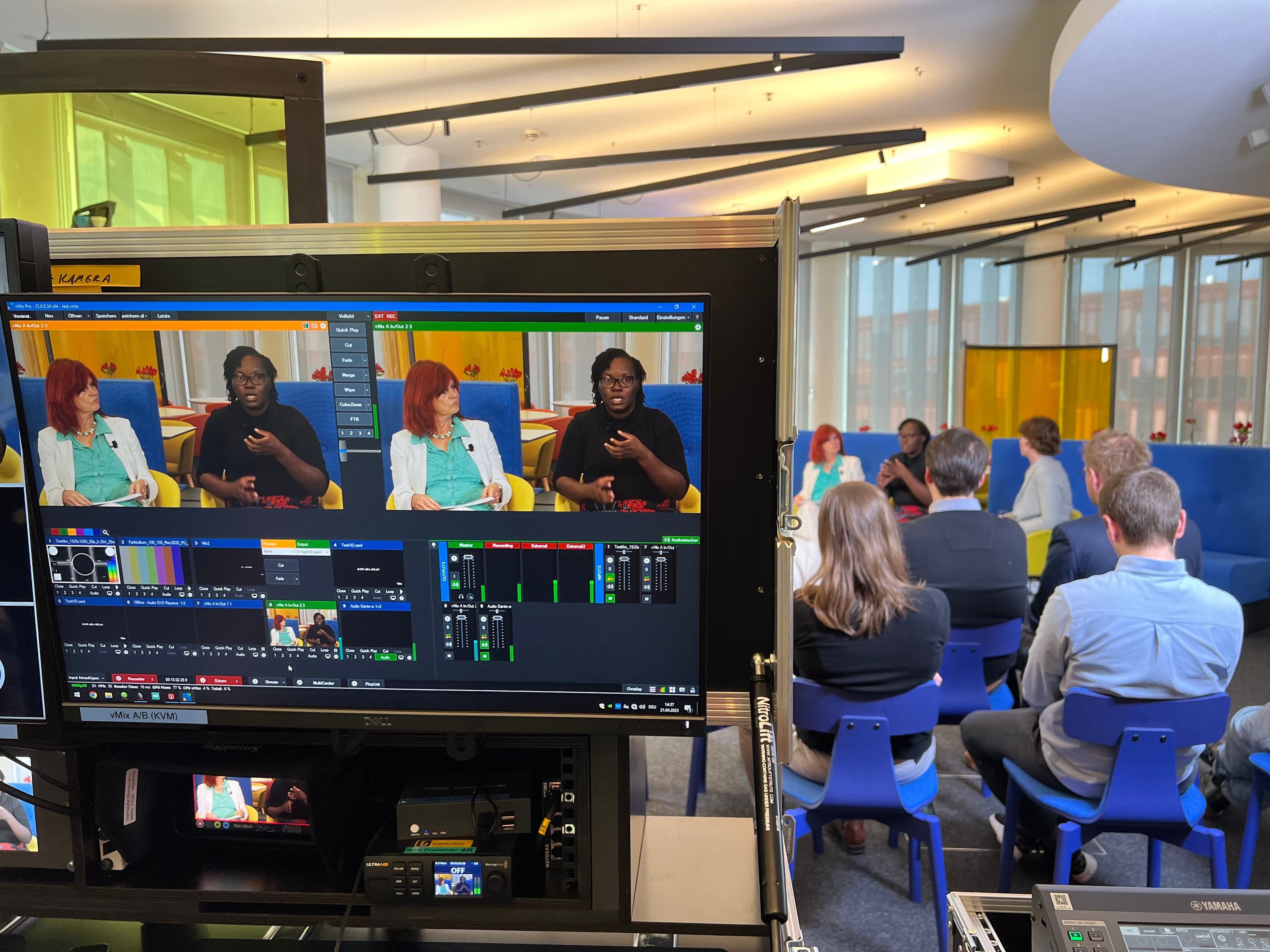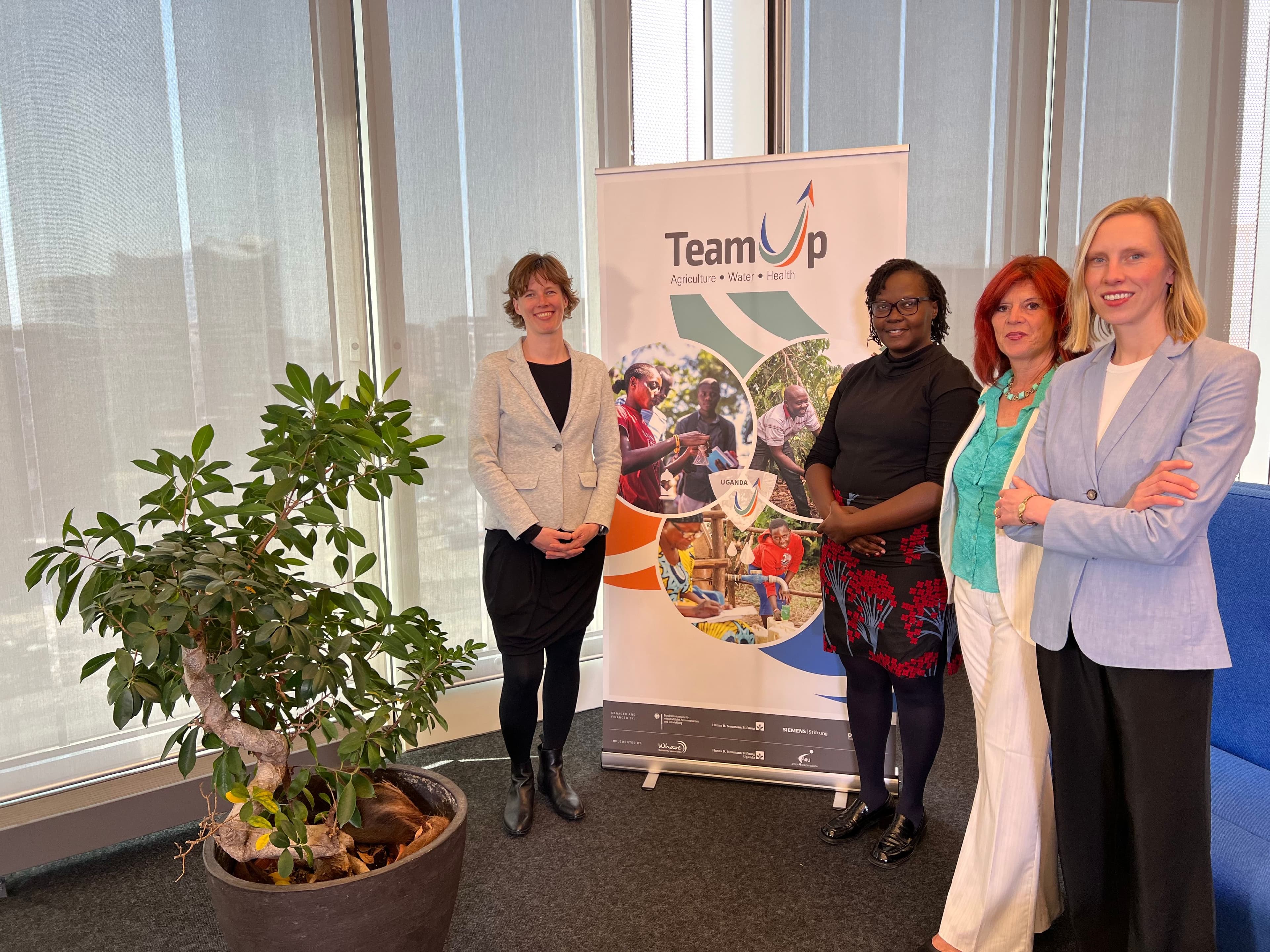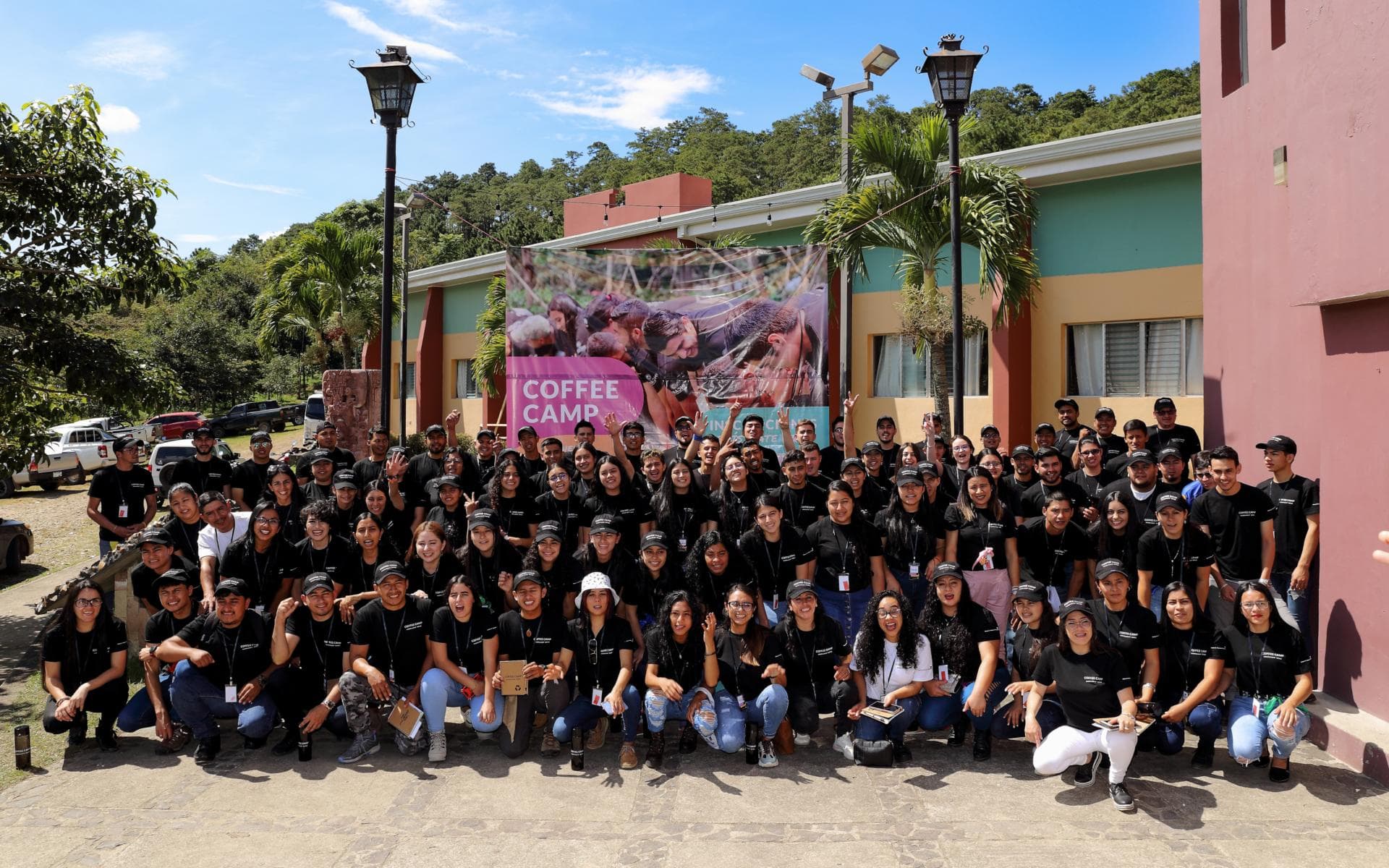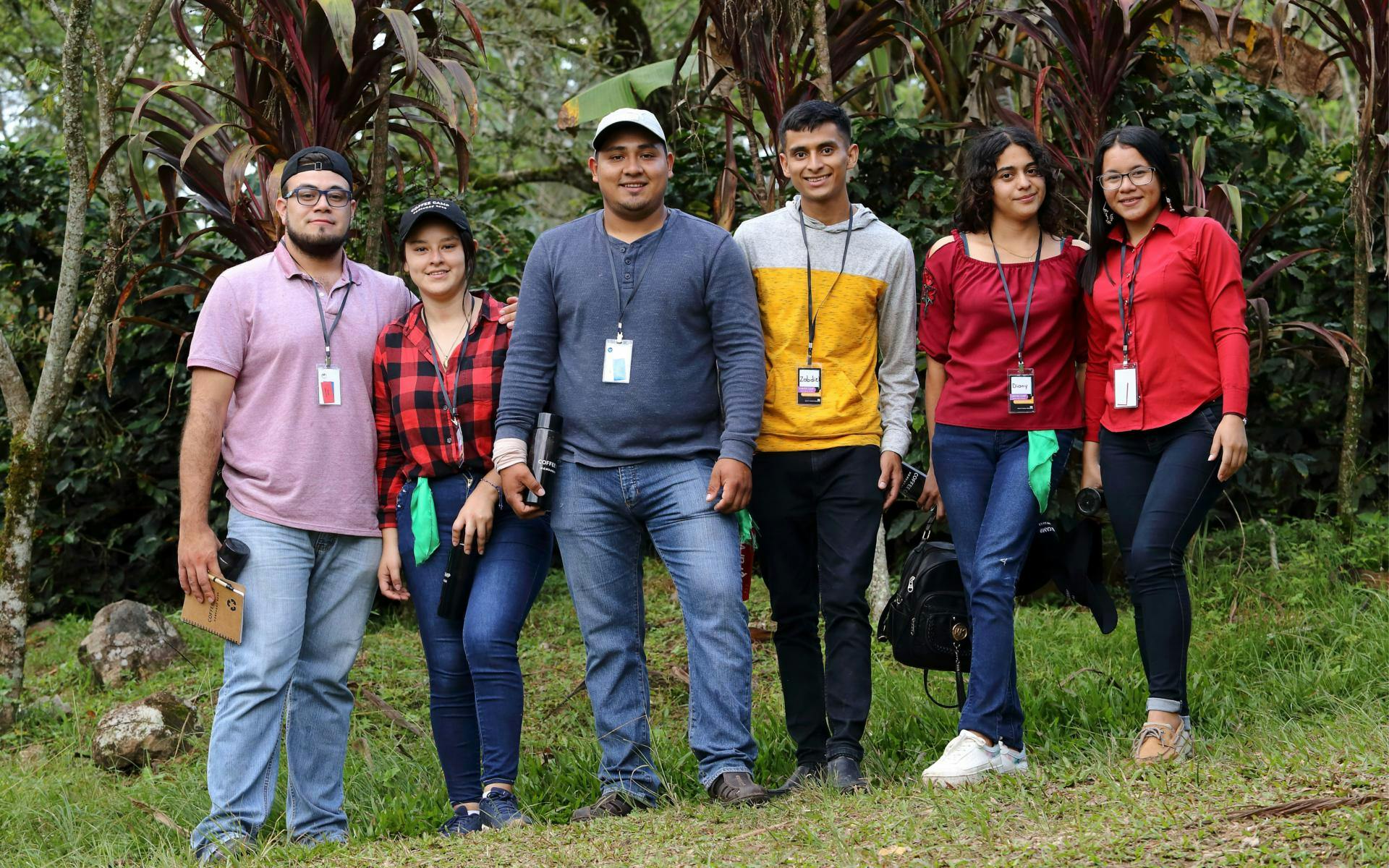Better Results Through Collaboration in Development Cooperation
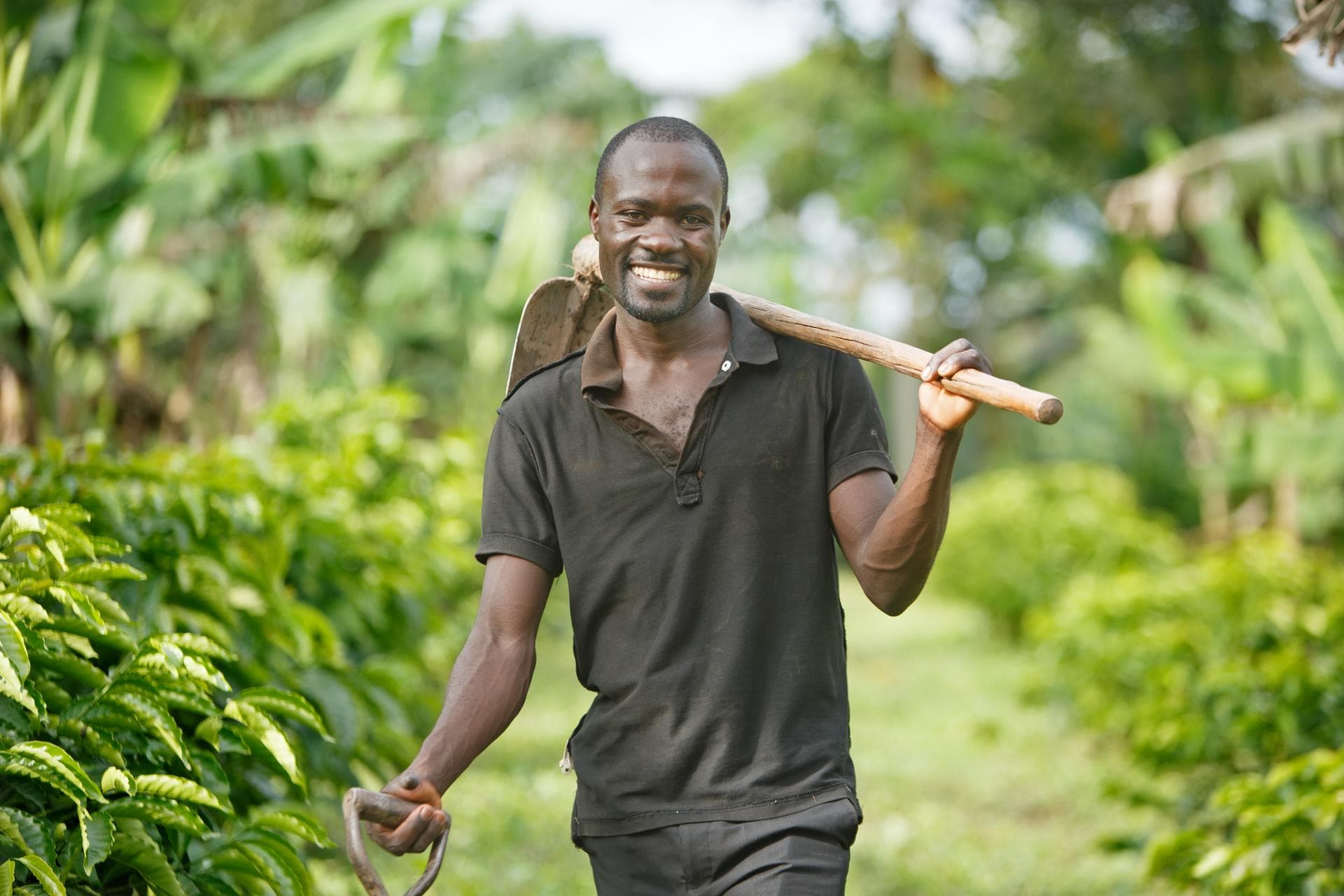
A Virtual Discussion Panel During the Digital German Foundations Day 2021
Too many cooks spoil the broth? This isn’t the case if the Federal Ministry of Economic Cooperation and Development (BMZ), Deutsche Stiftung Weltbevölkerung (DSW), Hanns R. Neumann Stiftung (HRNS) and Siemens Stiftung start the multisectoral program TeamUp Uganda together for youth empowerment in Uganda. The cooperation between the ministry and the three large German Foundations is so intense and successful that the presentation of the present results attracted broad interest during the Digital German Foundations Day 2021. “In order to work together successfully in TeamUp Uganda we had to achieve a very agile project management to handle the outstanding dynamics due to the large number of partners”, explained Florian Paulus, Program Coordinator TeamUp Uganda, from Deutsche Stiftung Weltbevölkerung (DSW). “We essentially had to think outside of the box.”
Generally development cooperation is carried out by specialists who are able to oversee their field of work in substance and are capable to master it organizationally. Examples are health care, agriculture or water supply. This approach is regarded as time proven because each field of work bears a grade of complexity that requires substantial technical skills in order to be successful. However, if development is to be accomplished sustainably, the diverse fields of work have to be conceptualized and ultimately approached in a holistic manner: Evidently an enhanced health care system can’t reach its potential if the region lacks access to save water or people lack income to meet their basic needs.
Problem-solving Approach TeamUp Uganda
TeamUp Uganda is a multisectoral approach that resolves the conflict of objectives between professionalism and holism. The pilot project runs since Oktober 2018 in the Mityana district in Uganda. A second phase is planned. In TeamUp Uganda:
- Deutsche Stiftung Weltbevölkerung (DSW) supports young people to access sexual and reproductive health services and to lobby on youth-specific issues in cooperation with the local implementing partner Action 4 Health Uganda;
- Hanns R. Neumann Foundation (HRNS) enhances the livelihood of young people in the agricultural sector by supporting them to access land, know-how and financial services via HRNS Uganda;
- Siemens Stiftung supports young people to access save water and to practice save sanitation and hygiene (WASH) together with the local implementing partner Whave.
Close Cooperation on Three Levels
The three foundations work together closely in the same region as well as for the same target group – young people. More than 50,000 young women and men between 15 and 30 years old have been reached since October 2018. This provides a solid base to preliminarily strike a balance and present this compelling multisectoral approach a broader public during the Digital German Foundations Day 2021.
Succeeding Cooperation
Rafael Teck from the Federal Ministry of Economic Cooperation and Development (BMZ) emphasized that nongovernmental organisations are often able to reach target groups very thoroughly and command over extensive networks on the ground. Often they can “make inroads into regions where governmental development does not always reach“. Additionally “foundations are relevant actors in setting agendas internationally“. On top of that they frequently offer comprehensive expertise und innovative approaches for complex problems. “The BMZ supports these activities in a very targeted way. It’s done through consulting and via Engagement Global and through financial backing that can total up to 75 % of the actual project expenses“, affirmed Teck. The ministry doesn’t instruct the implementing organisations – neither in selecting their field of work nor in the selection of the country to work in. However, TeamUp funded a part of the project expenses on its own that is visibly larger than average. This commitment guarantees even more independence and spaces for innovations.
Teck designated TeamUp Uganda as “one of the heavy vessels within the various cooperations that the BMZ is undertaking with foundations“.
However, according to Teck size is not the only category that matters in playing an important role. BMZ as well as Engagement Global have paid close attention to TeamUp primarily in order to learn from the pilot program.
Initial mitigation strategies that were identified through the assessment include improved land management in terms of increased shade-tree planting and locally appropriate cover crops. In regions where arabica is wet-processed, improved wastewater management alternatives were also identified.
Suitable Partner for a Larger Number of Target Groups
Christine Janezic from Siemens Foundation acknowledged the very positive experience that all stakeholders gained with their innovative form of multisectoral cooperation. Above all TeamUp enables the implementing partners to “provide suitable partners for more target groups than monothematic approaches allow us“, Janezic summed up. Each and every implementing partner was able to work within its respective “core competence“, and could thus contribute to the project “without buckling oneself“. However, the willingness to learn and a lot of flexibility from all partners have been critical. The constant discourse between all stakeholders coined the cooperation to a great extent. In order to meet challenges in a flexible way the three foundations started an innovation fund. Thus it became possible “to either readjust or to deliberately open up new areas of work“. Especially during the Covid-19 pandemic the innovation fund played a vital role. It allowed for example the establishment of facilities for hand hygiene which helped to reduce the spreading of the virus. Taking stock Janezic emphasized “that primarily during the take-off phase of such a multisectoral project much time is needed to get to know each other, to build trust and to harmonize the various modes of operation”. By now TeamUp thinks and acts as a team “in Germany and in Uganda“. A lot of synergies “developed in the field“. Many challenges were overcome concertedly, in many other instances one organisation paved the way for the other project partners.
Project Implementation as Cooperation Exercise
Sarah Kintu, the local Coordinator of TeamUp Uganda emphasized that there is “a very strong cooperation of the implementing partners on all three areas – health, water and agribusiness” on the ground. Each partner “profits from the expertise, skills and human resources of the other partners”. The most important factor is the “shared office space that enables cross- sectoral internal discussions, allows better coordination and the identification and evolution of synergies“. The community strategies that have jointly been set up by the three partners served as another important tool for the engagement with the primary beneficiaries. For example the Youth Empowerment Centers which are needed to bring youth together were utilized to better pursue all three project goals – health, water and agribusiness. The enhanced fieldwork was supplemented by joint communication and visibility strategies of the three partners which extended the outreach of every single partner in the communities as well as in lobbying and advocacy activities directed at the local government. A joint monitoring and evaluation system (M&E) allows a comprehensive formulation and better understanding of the complex project design.
Learning Together
Michael Opitz from Hanns R. Neumann Stiftung (HRNS), Hamburg straightened out that the sectoral approaches, modes of operation and cultures of the project partners are indeed quite divers. It took a lot of effort to mainstream these in a joint project. The dynamics during the course of the project were significant and the partners enriched each other mutually. They experienced “their own programmatic approach to be augmented“. “However, because everybody’s options grow, the focus must consistently rest on the fact that this growth – as well as the emerging synergies – has to be steeped, processed and has to be interwoven into the cooperation“, Opitz emphasized. Thus joint learning becomes a central element of multisectoral cooperation. However, a systematic approach is indispensable: “We compiled a common Theory of Change, a common log frame and agreed upon common indicators”, Opitz continued. Additionally the CEval GmbH was commissioned to do an external evaluation during all project phases. “All this additional information has to be fed back into the project procedures in a structured manner in order to be able to check if the target groups have actually been reached as planned“, Opitz concluded. He acknowledged that evaluation demands a higher input of work within a multisectoral undertaking compared to a traditional project. The same holds for communication and coordination.
The Local Government Mirrors the Project Approach
“In the meantime the local government has started to mirror our multisectoral approach“, Opitz highlighted. It established a roundtable in order to mainstream its own commitments in diverse areas. For HRNS‘ future projects Opitz concluded that the foundation will look out for additional expertise beyond its own core competence in agribusiness in other project regions too – especially in areas like WASH, health and perhaps family planning. „If you network with other actors pointedly it’s possible to achieve more“, Opitz resumed.
Those who want to learn more about the project and the extraordinary challenges with regard to cooperation in all three project areas – health water and agribusiness –, are very much welcomed to visit the projects’ website teamupug.org.

